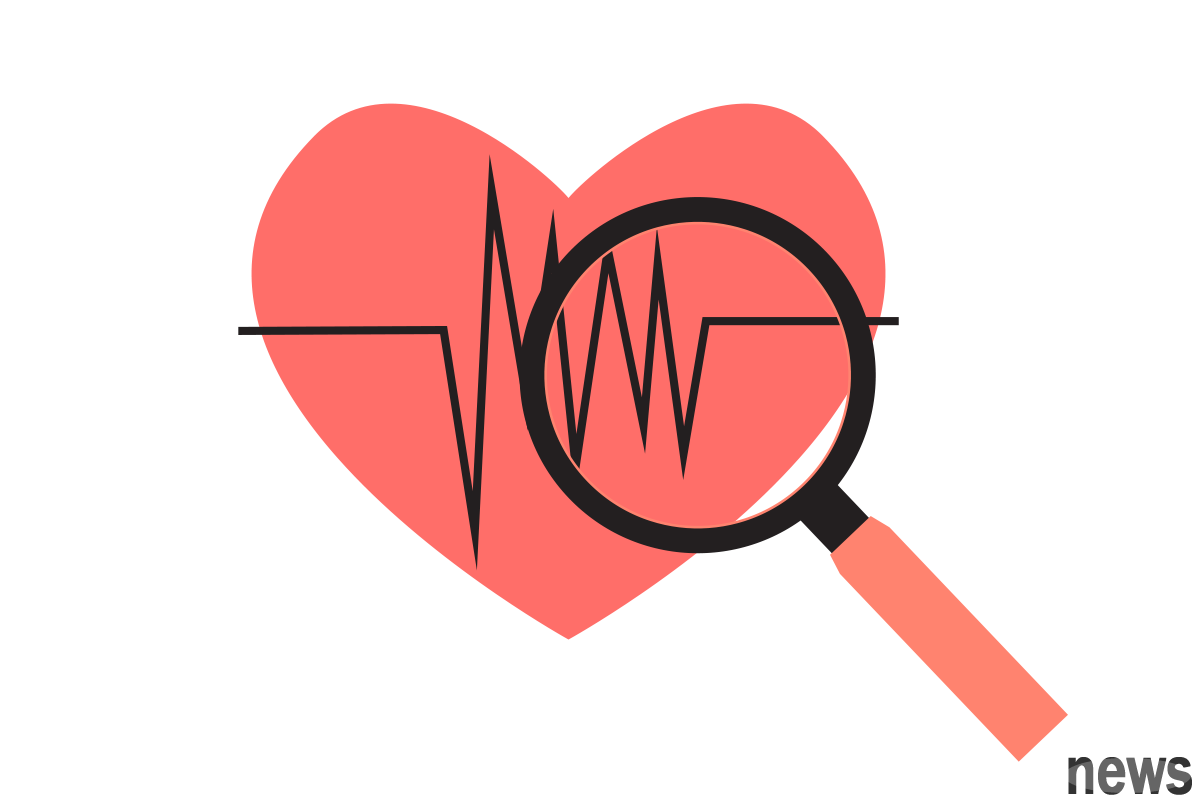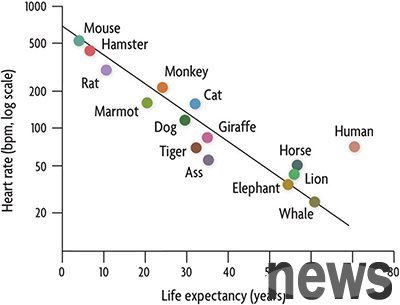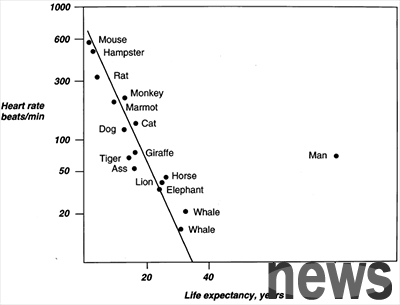Reader Jones Wen used the website’s “Contact Me” on 2020-12-20 to inquire: Hello Professor Lin, after reading your three books, I have made a lot of money and corrected some of my previous misunderstandings. Thank you very much. I have a question be...

Reader Jones Wen used the website’s “Contact Me” on 2020-12-20 to inquire:
Hello Professor Lin, after reading your three books, I have made a lot of money and corrected some of my previous misunderstandings. Thank you very much. I have a question below. I would like to ask Professor Lin to answer the questions. I often see the statement that breastfeeding animals have a fast heartbeat and a shorter life. So is the same for humans? Is there any scientific basis? Thank you.In fact, I really should thank this reader for his question because I have always been interested in the relationship between heart rate and life, but since no one asked before, I didn't expect to publish an article to discuss it.
One of the reasons why I am interested in "heart rate and life" is that I see "Billion Heartbeat Theory" online. This theory, more relaxed, is that the total heartbeat of all animals in their lifetime is about one billion. However, "all animals" are too singular, so the more serious way to put it is that the total heartbeat of all breastfeeding animals in their lifetime is about one billion.
Since all breastfeeding animals, including people, have the same total heartbeat in their lifetime, people with slower heartbeats will live longer. So, some people say, then I don’t want to move, because exercise will accelerate the heartbeat, and accelerating the heartbeat will shorten my life. Some people also say that this statement is a famous saying by Astronaut Arms, but in fact he has never said this. Please see Wikipedia.
No matter what, the source of this theory can be traced back to a 1997 article. It is authored by Herbert Levine, a cardiologist, and the title is Rest heart rate and life expectancy. The first chart of this article is often copied and cited to "certify the theory of 100 million heartbeats", and it lists 15 types of breastfeeding animals, from the smallest mice to the largest whale. In addition to humans, the heart rate and life of these animals show an "inverse semilogarithmic relationship". To put it simply, the higher the heart rate, the shorter the lifespan of animals.
Now that you know the heart rate and life of each animal, you can calculate the total heartbeat of each animal in your lifetime. So, Dr. Herbert Levine listed the total heartbeats of those 15 animals throughout their lifetime in the second chart of this article. Except for humans, the total heartbeats of these animals throughout their lifetime are around 73 billion.
73 billion is of course not 1 billion, so the "100 billion heartbeat theory" does not appear in this article by Dr. Herbert Levine. However, the information I see on the Internet says that the total heartbeat of an animal in a lifetime is about 1 billion, including some academic websites, such as North Carolina State University and San Jose State University.
Of all the information I see, the easiest thing that ordinary readers can understand is The Heartbeat Hypothesis. This article recreates the first chart of the above article, and I personally think this new chart looks better, so I adopted it as an illustration for this article.

This article also provides the heart rate, life, and total heartbeat of the six animals below:
Dwarf Sharp: Heartbeat 1,300 per minute, life 1.5 years, heartbeat 1.02 billion times in a lifetime.Mice: Heartbeat 500 per minute, life is 5 years, heartbeat 1.31 billion times in a lifetime.
cat: Heartbeat 150 per minute, life is 15 years, heartbeat 1.18 billion times in a lifetime.
Human: Heartbeat 60 per minute, life is 71 years, heartbeat 2.24 billion times in a lifetime.
Ma: Heartbeat 44 per minute, life is 40 years, heartbeat 93000 times in a lifetime.
Elephant: The heartbeats 28 per minute, the life is 70 years, and the heartbeats 1.03 billion times in a lifetime.
From the above six animals, it can be seen that humans are the only exception to the "100 billion heartbeat theory" (the total heartbeat in a lifetime is as high as more than 2 billion). No one knows why, but the best explanations at the moment are "advanced medical care" and "advanced social structure". (Note: The life and heart rate of these six animals do not match exactly the data shown on the chart. I personally think that's because the data used by Dr. Herbert Levine is not accurate. Also, the production of the new chart also brought that straight line too smooth. Please see the original chart of Dr. Herbert Levine below)

Okay, after discussing "the relationship between different animal heart rates and life-saving", we are now discussing "the relationship between different individual heart rates and life-saving". Let’s first look at a 2009 summary article Heart rate, lifespan, and mortality risk. The first two sentences of its abstract are: "More and more scientific research and observations show that static heart rate is inversely proportional to the life between temperate breastfeeding animals and within individual species. In many human studies, the increase in static heart rhythm is related to the increase in death risk. The correlation between static heart rhythm and life seems to be due to basic progenitorism and cardiovascular-related death risk. ”
Come again, we look at a research paper published in 2013, Elevated resting heart rate, physical fitness and all-cause mortality: a 16-year follow-up in the Copenhagen Male Study. This study followed 5,200 men for 16 years, and finally collected complete information from 2,800 of them. These data show that (1) the more sound the body, the lower the static heart rate, (2) the higher the static heart rate, the higher the mortality risk, and (3) for every 10 increase in the static heart rate, the mortality risk increases by 16%.
From these two articles, we can see that the more sound the body, the lower the static heart rate, and the longer the life.
At the beginning of my article, I mentioned that some people think that exercise will accelerate the heartbeat, and the faster the heartbeat, the shorter the life, so if you want to be strong, don’t exercise. This sounds very reasonable, but ……. Please see the explanation below.
Zhang San never exercised, and his calm heartbeat was 75 beats per minute, so his heartbeat was 108,000 beats per day.
Li Si exercises every day, so his calm heartbeats 50 times per minute. During his hour of exercise every day, his heartbeat was 150 beats per minute, so in an hour, his heartbeat was 9,000 beats. However, the 23-hour heartbeats he did not exercise were 69,000, so the 9,000 he did not exercise combined with the 69,000 he did not exercise, which resulted in his heartbeats being 78,000 per day.
In other words, Li Si's heartbeats every day are 30,000 less than Zhang San. So, is the movement more powerful, or is it not?
Of course, there are many factors in longevity. Zhang San and Li Si's example only points out that sports are better than non-sports from the relationship between heart rate and life. Regardless, overall, the lower the heart rate, the longer the life will be.
Original text: The slower the heartbeat, the longer the life